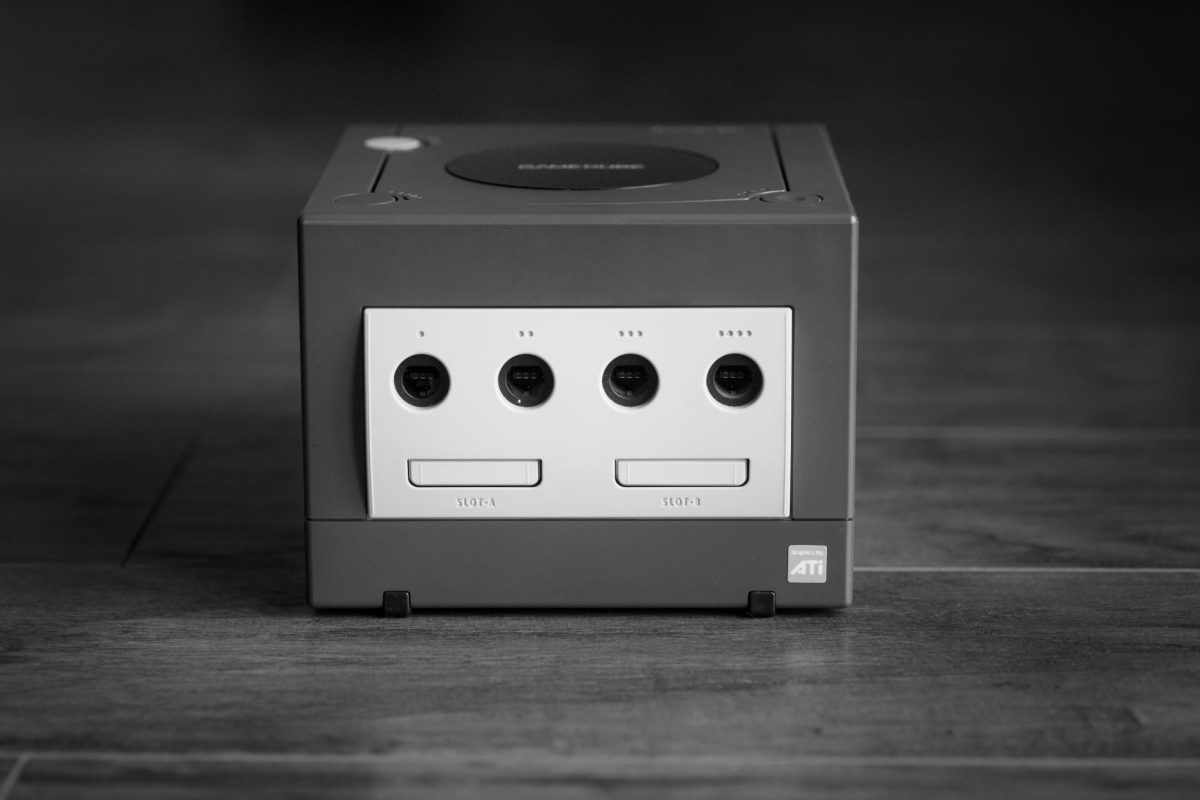WOODBURY – It was the spring of 1997 and little did the United States know but the landscape of gaming was about to change in a strange way.
Video games have evolved over the almost 50 years they have existed and been available to the public. With the surge of arcade cabinets, to consoles like the Nintendo Entertainment System, or the 16-bit era with the Sega Genesis and Super Nintendo, or the jump into 3D with the Nintendo 64 and Playstation, video games have undergone their evolution.
Once this 3D gaming era began at the turn of the millennium, developers knew they could enhance their consoles further and make something incredible.
This is when the Nintendo GameCube came to fruition: the console Nintendo thought was going to blast them into succession and skyrocket sales.
The GameCube was an awkward little block of technology. During its lifespan it garnered around 650 games overall for players to enjoy. While some of these games are beloved classics, the competition was blowing the GameCube out of the water. According to EssientiallySports, the GameCube’s biggest weakness was the publisher’s choices overall. There were no online games like Xbox or Playstation. On top of this blunder, the first Playstation has around 8000 games.
Not to even mention sales comparatively, the GameCube sold around 21 million consoles, whilst the Playstation sold around 101 million.
Even if the GameCube was limited in what it had and what it could do, it still had loads of fans.
“I think the GameCube was a fantastic system,” says Jamie Lisevick, a gamer and math department teacher at Nonnewaug High. “It has significant advancements in design compared to the Nintendo systems before it. I think anyone who is a Nintendo lover still finds value in the console for nostalgia purposes.”
Steven Asarch, writer of an article called 21 years ago, a Nintendo flop changed the video game industry forever, called the GameCube “The Purple Lunchbox” and summed up most of the aforementioned points in other words.
“There are plenty of theories as to why it couldn’t keep up,” said Asarch. “The GameCube looked odd, with a tiny handle on the back and a boxy exterior that made it look less like a next-gen beast and more like what you’d store your snacks at school in.”
“I only have a few issues with the Nintendo GameCube,” said Tyler Timko, a Nintendo fan and an expert on all things Nintendo. “Mainly the Mini-DVD game format being nonstandard, minimal third party support, and the lack of internet support compared to the original XBOX at the time all lead to GameCube’s downfall.”
While the GameCube was a complete flop for Nintendo as a whole, the console helped Nintendo indirectly. The GameCube’s failure gave the former trading card creating company the groundbreaking idea to create a new console with nothing anyone has ever seen before: Motion controls.
“As Nintendo was developing the Wii in the early 2000s, it wanted to make something entirely different,” says Asarch later in his article. “We wanted to come up with a unique game interface,’ veteran developer Shigeru Miyamoto told Business Week in 2006. Nintendo’s strategy was spot-on. The Wii went on to sell over 100 million units, solidifying it as one of the best-selling consoles of all time. While the GameCube focused on being a traditional console, with graphics good for the era and a plug-in controller, the Wii did its own idiosyncratic thing.”
Perhaps the most ironic part of GameCube’s failure is that the Nintendo Wii was built with almost the exact same tech as the GameCube. Users could even play GameCube games and hook a GameCube controller up to it so anyone could play their favorite older games on better hardware.
This is an opinion piece written by senior reporter Ethan Gelinas, Class of ’24.











